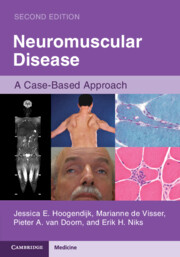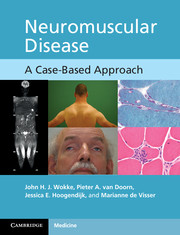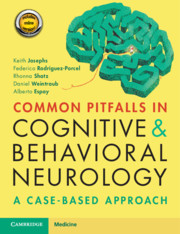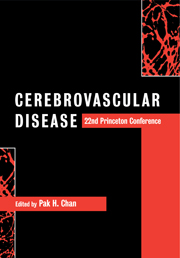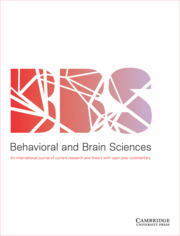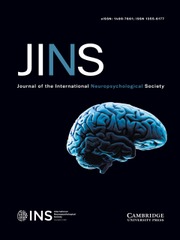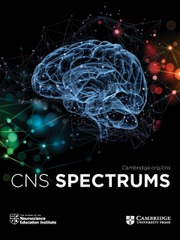Neuromuscular Disease
There are over 800 neuromuscular disorders and this can leave clinicians feeling lost as they try to diagnose and manage patients. On the basis of 66 adult and paediatric neuromuscular case vignettes, readers will be walked through using case histories and clinical manifestations as a starting point for diagnosis. For each case, diagnostic tools, disease pathogenesis, prognosis and treatment options are discussed. Symptoms, signs and syndromes are cross-linked to help the reader navigate the array of disorders. Accompanying tables explain differential diagnoses and 30 videos demonstrate clinical features. This second edition has been thoroughly updated as the neuromuscular subspecialty has developed from clinically and pathologically descriptive to making use of new diagnostic technologies and therapies. Neurologists at all levels, paediatricians, internists, geneticists, rehabilitation physicians, physiotherapists and researchers in the field will find this an invaluable guide, as they seek to familiarise themselves with this complex range of disorders.
- A comprehensive introductory chapter and many tables help to cross-link various symptoms and signs, aiding recognition of phenotypes and diseases
- 30 videos demonstrate the clinical manifestations of diseases, including recordings of EMG, muscle and nerve ultrasound investigations, helping readers assess their patients
- Written by experienced neurologists drawing on years of experience diagnosing and managing these disorders
- Practical chapters on genetic testing, electrodiagnostic investigation, imaging tools, pathology and management help practicing physicians to apply new developments in the fields of molecular genetic testing, treatment and care
Product details
December 2024Paperback
9781108744188
294 pages
255 × 179 × 15 mm
0.62kg
Available
Table of Contents
- Part I. Evaluation and Treatment of Patients with a Neuromuscular Disorder:
- 1. Neuromuscular diseases: anterior horn cell disorders, peripheral neuropathies, neuromuscular junction disorders, myopathies
- 2. History taking and clinical examination
- 3. Differential diagnosis by presenting or prominent clinical feature
- 4. Electrodiagnostic studies
- 5. Imaging
- 6. Muscle and nerve pathology
- 7. Genetic testing
- 8. Management
- Part II. Neuromuscular Cases
- Disorders of the Anterior Horn Cell:
- 1. Amyotrophic lateral sclerosis
- 2. Primary lateral sclerosis, 3. Progressive muscular atrophy)
- 4. Segmental spinal muscular atrophy
- 5. Spinal and bulbar muscular atrophy (SBMA
- Kennedy disease)
- 6. Spinal muscular atrophy type I
- 7. Spinal muscular atrophy type 3
- 8. Post-polio syndrome
- poliomyelitis anterior acuta, West Nile virus poliomyelitis, acute flaccid weakness in children
- Peripheral Neuropathies:
- 9. Guillain-Barré syndrome and Miller-Fisher syndrome
- 10. Chronic inflammatory demyelinating polyneuropathy
- 11. IgM anti-MAG polyneuropathy
- 12. Polyneuropathy, organomegaly, endocrine manifestations, monoclonal protein, and skin changes syndrome
- 13. Vasculitic neuropathy
- 14. Small fibre neuropathy
- 15. Paraneoplastic sensory neuronopathy (SNN, ganglionopathy)
- 16. Wartenberg migrant sensory neuropathy
- 17. Multifocal motor neuropathy
- 18. Peripheral nerve hyperexcitability syndromes: Morvan syndrome
- 19. Idiopathic brachial plexus neuropathy, neuralgic amyotrophy
- 20. Diabetic polyneuropathy
- 21. Alcoholic polyneuropathy
- 22. Chronic idiopathic axonal polyneuropathy
- 23. Critical illness polyneuropathy and myopathy
- 24. Drug-induced polyneuropathies: Amiodarone polyneuropathy
- 25. Lyme radiculopathy
- 26. Leprosy
- 27. Charcot-Marie-Tooth disease type 1a/Hereditary neuropathy with liability to pressure palsies
- 28. Charcot-Marie-Tooth disease type 2a and 2b
- 29. Hereditary sensory and autonomic neuropathy type 4
- 30. Hereditary transthyretin amyloidosis
- Disorders of the Neuromuscular Junction:
- 31. Myasthenia gravis with acetylcholine receptor antibodies
- 32. Myasthenia gravis with MuSK antibodies
- 33. Drug-induced myasthenia gravis: Immune checkpoint inhibitor-related
- 34. Lambert-Eaton myasthenic syndrome
- 35. Congenital myasthenic syndromes: Dok7
- Myopathies:
- 36. Duchenne muscular dystrophy
- 37. Becker muscular dystrophy
- 38. Facioscapulohumeral muscular dystrophy
- 39. Myotonic dystrophy type 1
- 40. Myotonic dystrophy type 2
- 41. Limb girdle muscular dystrophy R1, calpain-related
- 42. Limb girdle muscular dystrophy R9, FKRP-related
- 43. Bethlem myopathy, a collagen VI-related myopathy
- Ullrich congenital muscular dystrophy
- 44. Oculopharyngeal muscular dystrophy
- 45. Emery-Dreifuss muscular dystrophy
- 46. Caveolinopathy, rippling muscle disease
- 47. Distal myopathies: Miyoshi myopathy, dysferlinopathy
- anoctaminopathy
- 48. Distal myopathies: GNE myopathy
- 49. Myofibrillar myopathies: Desminopathy
- 50. Skeletal muscle channelopathies: non-dystrophic myotonia
- myotonia congenita (Becker)
- 51. Skeletal muscle channelopathies: hypokalaemic periodic paralysis
- 52. Pompe Disease (glycogen storage disease type II
- α-glucosidase deficiency)
- 53. McArdle Disease (glycogen storage disease type V)
- myophosphorylase deficiency), rhabdomyolysis
- 54. Carnitine palmitoyltransferase-II deficiency
- 55. Mitochondrial myopathies: chronic progressive external ophthalmoplegia
- 56. Ryanodine receptor 1-related disorders
- 57. Congenital myopathies: X-linked myotubular myopathy
- 58. Congenital myopathies: nemaline myopathy
- 59. Juvenile dermatomyositis
- 60. Dermatomyositis
- 61. Immune-mediated necrotising myopathy
- 62. Inclusion body myositis
- 63. Endocrine myopathy: Hypothyroid myopathy
- hyperthyroid myopathy
- 64. Drug-induced myopathies: hydroxychloroquine myopathy
- 65. A- or paucisymptomatic hyperCKaemia
- 66. Exertional rhabdomyolysis.

